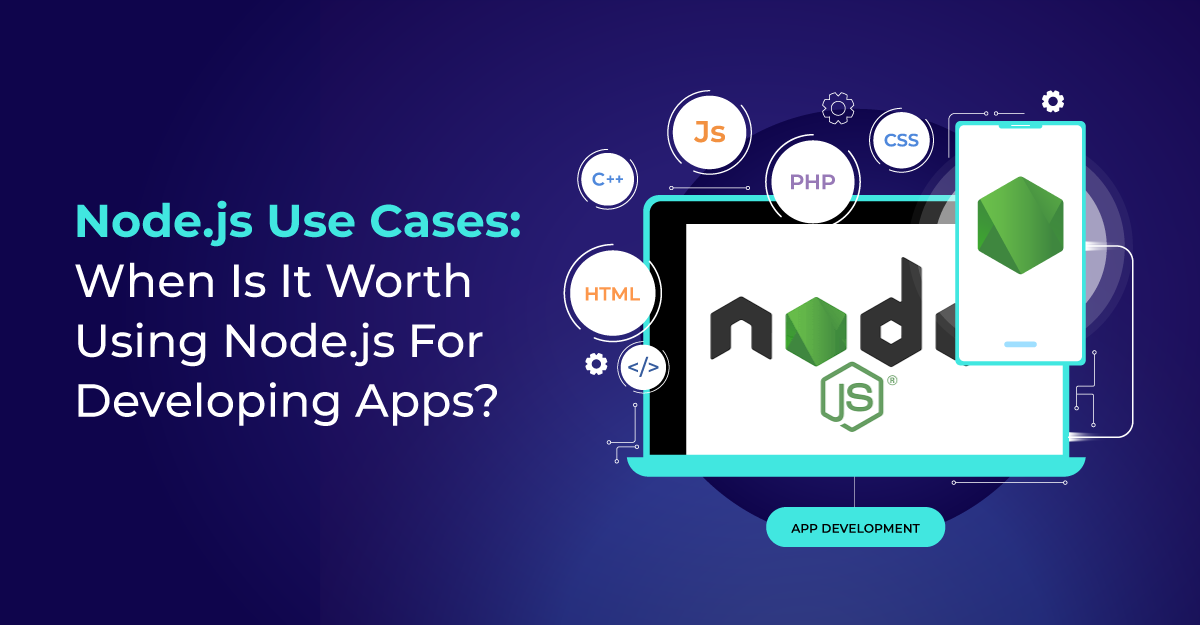We may anticipate a surge in the number of feature-rich and comprehensive web applications in the years to come. Despite the undeniable fact that the process of designing web apps will be substantially more complex than in the past, it is crucial to recognize that Node.js will play a significant role in the bulk of the process.
Node.js will be the most widely adopted back-end programming framework for high-traffic websites in 2025. Node.js application development company is responsible for constructing several major web applications, such as Twitter, Upwork, Medium, and Spotify, as well as many more minor web services.
Top cases where you must use Node. js
Real-Time Apps
Applications that allow bidirectional communication between clients and servers are considered real-time applications. The combination of Node.js and web sockets makes it easier for developers to create one. The services provided by the Node.js development company in India simplify the administration of numerous client requests and facilitate the exchange and reuse of library functions.
The applications are capable of producing instantaneous responses despite time constraints. It is perfect for real-time communication because it only supports a single thread simultaneously. Because it is the optimal platform for creating low-latency applications, it should be used whenever a significant number of brief messages must be processed. In addition, it utilizes socket.io, which streamlines the app development process.
Server-Side Proxy
When a third-party proxy is utilized, web applications may become disorganized. Some standard third-party servers, such as Nginx and HA Proxy, are not necessarily scalable or capable of handling many requests simultaneously. Using Node.js will facilitate the creation of a superior and more relaxed server proxy.
According to developer concerns, most proxy servers cannot meet the numerous server-side proxy requirements. Node.js is helpful in these circumstances since it collects data from servers maintained by third parties. In reality, Node.JS is the development paradigm of the future. The BBC News organization utilizes Node.js. It manages its numerous connections by capitalizing on the fact that it does not impede.
For example, the BBC news website, which communicates with several servers maintained by third parties, collects information from various sources. Node.js will assist in proxying many services with varying response times in this scenario.
Real-Time Collaboration and Coordination
Real-time collaboration tools are software solutions widely used for several tasks, such as project management, co-browsing, audio and video conferencing, and collaborative document editing.
Multiple I/O requests and events may co-occur in various software applications. In a system for project management, for instance, multiple users can simultaneously submit comments, change the project's status, and attach files to the project they are working on.
Node.JS has been a popular choice among developers for creating real-time collaboration solutions now that it can easily manage intensive I/O activities thanks to its WebSockets and Event API. Node.JS is capable of handling intensive I/O activities.
Trello, for instance, chose Node.js due to its event-driven and non blocking architecture. This enables the organization to change its collaborative environment rapidly.
Continuous data flow
Streaming data on the Internet requires intensive processing. The process of data streaming is complicated because it requires a constant stream of data to be generated by many sources and devices, and this data must be provided in many formats.
Node has made the streaming of data more accessible than ever before. HTTP requests and responses are handled individually in conventional media streaming, despite being streams in and of themselves. With Node.js, creating some really intriguing data streaming features is feasible.
These features enable the analysis of files while they are being uploaded. Because the data is received in the form of a stream and its processing can occur online without interruption, this is possible. Encoding music or video in real-time, for instance, is achievable, mainly when performed with a JavaScript library such as Node. The Media and Entertainment industry is one example of an industry that could benefit from employing Node.js for data streaming.
Wireless connectivity
The issue signals that travel in both ways and the demand for bandwidth. Bandwidth consumption is the most challenging challenge to overcome regarding networking. Choosing a reliable source that simultaneously collects and transmits data to the proper area may be difficult.
The collection and routing of data between devices, followed by the generation of a reliable bidirectional signal, are of the utmost importance in this context.
Node.js is the solution, and it will help guarantee ongoing data communication. Internet usage has become too vital to our daily life. A single glitch might potentially spoil an otherwise perfect workday. Node.js facilitates installing a proxy server for connectivity and routing because it provides non blocking services.
GoDaddy, one of the most popular domain name registrars and web hosting businesses, uses Node.js for the development of its company's back-end infrastructure. Due to the use of the non blocking service node.js, GoDaddy has been able to achieve a higher degree of uptime. Additionally, it can manage several requests without issue.
Developing a Microservices Architecture
The term "microservices architecture" refers to an approach for creating a web application as a collection of small, independent services, each of which performs a unique function in the program's underlying business logic.
Microservices architecture has experienced a stratospheric growth in popularity over the past few years, especially in light of the rise of Amazon, Facebook, and Netflix. In this web application, microservices often communicate with one another using the REST/HTTP protocol and the JSON data structure.
Node.JS is the best technology to deploy for designing a microservices architecture since it is simple to mount different instances of servers for specific microservices and design appropriate routing addresses for them. This is since Node.JS was created particularly for this reason.
Due to the lightweight nature of Node.js, which also contributes to the language's overall efficiency, a web application's scalability, maintainability, and efficiency can be significantly enhanced.
In 2013, PayPal was the first corporation to utilize these benefits. The application stack of PayPal was modularized with Node.js, and the development process was divided into many independent microservices. Due to the company's adoption of Node.js, they significantly reduced their codebase while also enhancing performance.
Chatbots
The issue is that investing in customer care calls may be reasonably expensive for businesses. An average of 265 billion calls to customer service are made each year. This results in nearly $1.3 trillion in annual expenditures for the corporation.
Node.js is the solution since it offers more cost-effective and budget-friendly chatbots. Node.js is necessary for any interface that requires the rapid exchange of messages, especially in browser game chat rooms.
Through Express.js, the application programming interface (API) has been streamlined and now facilitates the transfer of data and messages in real-time. Numerous websites and applications employ chatbots routinely.
The app Drift effectively exemplifies this use case. In this procedure, chatbots are utilized, resulting in the connection of qualified leads with businesses. Drift enables people to communicate directly with the chatbot, enhancing the overall customer experience a node.js application development company provides.
Conclusion
This article has examined the plethora of Node.js use cases and the numerous business sectors in which it reigns supreme. It is not a secret why Netflix, Uber, LinkedIn, and PayPal, among others, have placed their trust in JavaScript technology and chosen it above other programming languages. Each new version of Node.js, like all other technologies, represents an improvement. Despite this, it is too early to make predictions about Node.js due to the constant evolution of computer needs in tandem with technical progress.



